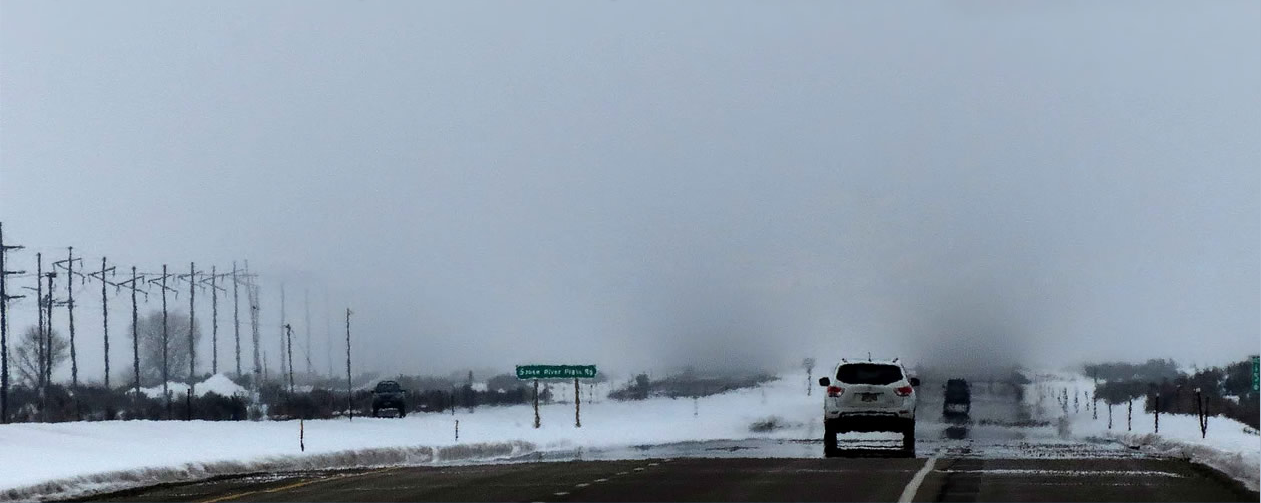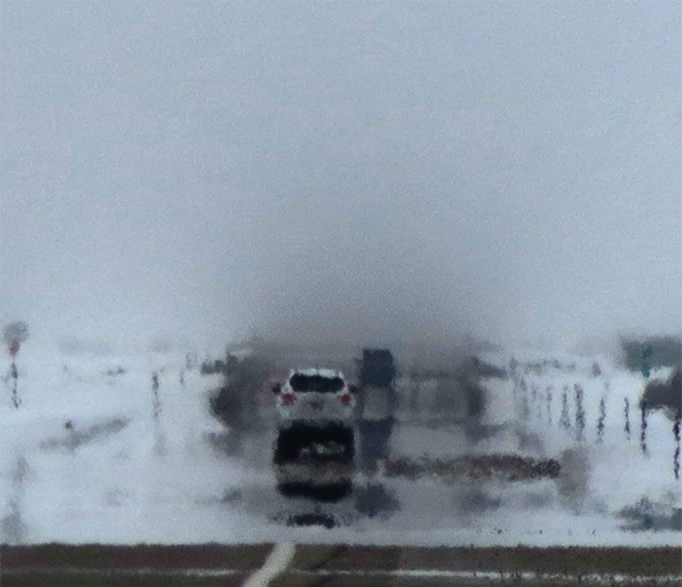Road Blink & Mirage, Idaho - OPOD
Road Blink & Mirage, Idaho - Exploring the Fascinating Optical Phenomenon
Have you ever come across a mesmerizing optical illusion that made you question your perception of reality? One such intriguing phenomenon is known as Road Blink & Mirage, captured beautifully in Idaho, USA, by the talented photographer Alan Clark. This unique scene takes place on a flat lava field, which also happens to be a major potato growing area. In this article, we will delve into the captivating world of Road Blink & Mirage, uncovering its intricate details and shedding light on the science behind it.
The Enigmatic Road Blink & Mirage
As we examine Alan Clark's photograph, we are greeted by a snowy landscape with one striking contrast - the dry roads. Despite their appearance of wetness, these roads are not actually covered in water. Instead, they create a perplexing optical effect called 'road blink', resulting from an inferior mirage. In this specific instance, the dark patches on the road indicate both the twinned highway and a service road. Interestingly, similar 'blinks' have been utilized by Arctic dwellers to navigate through the darker 'leads' of water surrounding ice floes.
The Intricacies of Blink
To comprehend the mesmerizing phenomenon of Road Blink & Mirage, we must first understand the concept of 'optical thickness'. When cloud and mist become optically thick, direct light is unable to penetrate through. Rays of light that enter the cloud collide with numerous small water droplets, causing them to scatter in all directions. Consequently, the cloud's surface appears diffuse and takes on the color of the incident light.
In the case of the photograph, rays from the snow-covered fields illuminate certain areas of the cloud surface, leading to the scattering of light back downwards. As a result, the cloud above the dark road appears less illuminated compared to other regions. It's worth noting that snow is not a prerequisite for this phenomenon; even colored fields can produce a similar effect, lighting and tinting low clouds.
Decoding the Complex Inferior Mirage
The most intriguing aspect of Road Blink & Mirage lies in the complex inferior mirage that manifests on the dark road surface. This mirage is a result of a multi-layered process involving sunlight, warmth, air density gradients, and temperature variations. Here's a breakdown of the phenomenon:
- The dark road surface has previously been exposed to sunlight and retains warmth.
- The warm road surface heats the layer of air directly above it.
- Above the warm air layer, colder air exists.
- Rays from both the cars and the sky refract across the temperature and air density gradients, giving rise to the mirage.
- Each car appears to have an inverted image beneath it, resembling water. This 'water' is actually a mirage image of the cloudy sky.
It is not uncommon for inferior mirages to stop at this point. However, in the case of Road Blink & Mirage in Idaho, there is an additional element that contributes to the complexity of the phenomenon. The undulating nature of the road creates an undulating series of alternately inverted and erect images, resulting in a captivating visual display.
Unveiling the Intricacies
The fascinating world of atmospheric optics never fails to amaze us with its intricate phenomena. Road Blink & Mirage, as observed in Idaho, offers a glimpse into the beauty and complexity of these optical illusions. By understanding the scientific principles behind this phenomenon, we gain a deeper appreciation for the interplay between light, temperature, and air density that gives rise to such captivating displays.
As we continue to explore the wonders of atmospheric optics, let us embrace the opportunity to witness these mesmerizing phenomena firsthand. Whether it be through the lens of a camera or with our own eyes, there is much to be discovered and admired in the world of optical illusions. So next time you find yourself gazing at a seemingly ordinary scene, take a moment to appreciate the hidden wonders that lie within the realm of atmospheric optics.

Road Blink & Mirage ~ A scene in Idaho, USA pictured by Alan Clark. The land is a flat lava field and a major potato growing area. Here, all is snow covered except for the dry roads. Their seeming wetness is a complex inferior mirage. The roads form dark patches, 'road blink', in low cloud and mist. The three patches indicate the twinned highway and a service road. Arctic dwellers exploited similar 'blinks' to navigate through the darker 'leads' of water surrounding ice floes. All images ©Alan Clark, shown with permission

Blink - Cloud and mist can be so dense that it is 'optically thick'. No direct light passes through. Rays entering the cloud are scattered in all directions by collisions with many small water droplets. The cloud surface appears diffuse and the same colour as the incident light.
Rays from the snow covered fields light the cloud surface in places and some light scatters back downwards. The cloud is less lit above the dark road.
Snow is not needed. Coloured fields similarly light and tint low clouds.

Complex Inferior Mirage - The dark road surface has previously seen sunlight and is warmed. In turn it warms a layer of air above it. Above that is colder air. Rays from the cars and sky refract across the temperature and air density gradients to form the mirage. We see beneath each car an inverted image. The 'water' is a mirage image of the cloudy sky.
Many inferior mirages stop there. The cars have traces of another mirage image - this time erect - beneath the inverted one. Inferior mirages can form a series of alternately inverted and erect images. In this case the undulating road helps.
Note: this article has been automatically converted from the old site and may not appear as intended. You can find the original article here.
Reference Atmospheric Optics
If you use any of the definitions, information, or data presented on Atmospheric Optics, please copy the link or reference below to properly credit us as the reference source. Thank you!
-
<a href="https://atoptics.co.uk/blog/road-blink-mirage-idaho-opod/">Road Blink & Mirage, Idaho - OPOD</a>
-
"Road Blink & Mirage, Idaho - OPOD". Atmospheric Optics. Accessed on November 26, 2024. https://atoptics.co.uk/blog/road-blink-mirage-idaho-opod/.
-
"Road Blink & Mirage, Idaho - OPOD". Atmospheric Optics, https://atoptics.co.uk/blog/road-blink-mirage-idaho-opod/. Accessed 26 November, 2024
-
Road Blink & Mirage, Idaho - OPOD. Atmospheric Optics. Retrieved from https://atoptics.co.uk/blog/road-blink-mirage-idaho-opod/.